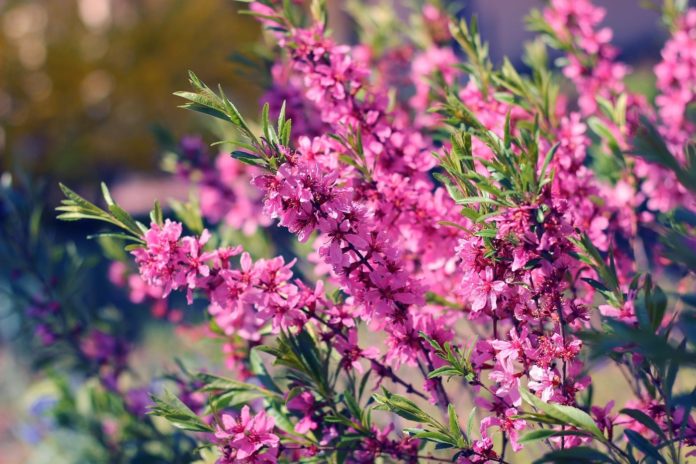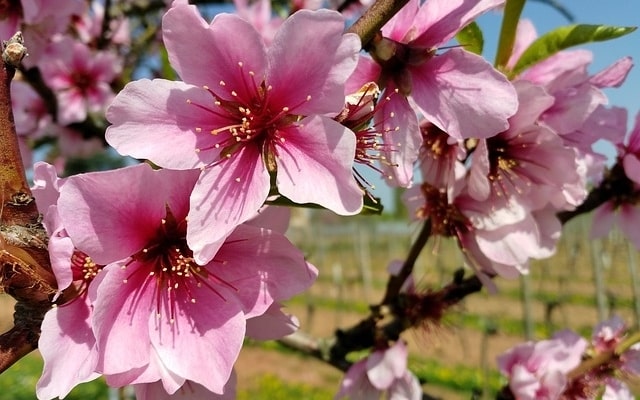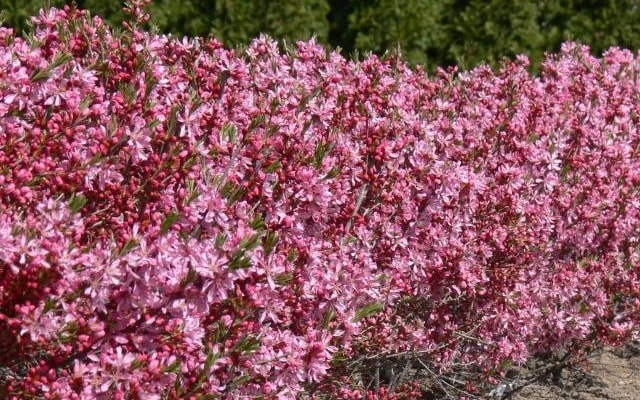This guide is meant to teach you how to propagate Russian almond (Prunus tenella) and hopefully make it easier for you to sell them at your own nursery.

Hardiness Zone: 2-6

Soil Type: Well-Drained Loam, Silty Loam, Sand

Water: Low to Average. Fair Drought Resistance

Exposure: Full Sun
Russian almond is a hardy zone 2 perennial shrub native to western Asia and eastern Siberia. In early spring, it shows an abundant display of pink flowers.
It’s a deciduous shrub with suckering habit, which can make it hard to control as a landscaping shrub.
Although it grows into dense thickets, which make them great for wildlife cover and food. Russian almond can attract all sorts of birds, mammals and insects.
Additionally, they make great windbreaks and can beautify roadsides while preventing erosion.
Fun fact: Some Prunus species have been used for cancer research and as an astringent for coughs, colds, and gout. More on boreal forest medicinal plants here.
Best Way to Propagate Russian Almond
Method: Division
Russian almond is a suckering plant, this makes it especially easy to propagate. In a sense, it does a lot of the work for you.
Russian almond plants naturally send out roots from which new plants grow from. With these types of plants, the best thing to do to propagate is to dig around the sucker(new growth) and separate it from the main root.
Afterward, if there are any left, trim the remaining main root from the sucker. Also try to remove any long, leafy shoots, this limits drying and promotes bushy growth.
Finally, place the sucker in a sandy propagation bed, and keep the moisture steady with automatic sprinklers. Cover with a shade cloth for partial sun exposure, and give them time to create more roots.
Method: Sowing
Russian almond seeds require many months of stratification before planting. Naturally, they fall late summer and stay under forest litter during winter.
Sometimes, even the first season won’t be enough for them to germinate, they might take another full year to sprout.
For best, controlled results, soak Russian almond seeds 24 hours, followed by 60 days warm moist stratification, followed by 120 days cold moist stratification.
Online, you can buy Russian almond seeds at Incredibleseeds.ca.
How to Ready Russian Almond For Sale
After you root your suckers, or manage to germinate your seeds. Plant your Russian almonds in deep pots to allow them to make deep roots rather than wide roots. Set the pots in full sun.
Generally, Russian almond can grow up to 1.5m in height and spread.
With suckers, your plants shouldn’t take too long to grow. Within 3-4 weeks of growth, they are ready for sale. Keep them trimmed to ensure more of a bushy growth rather than tall, and flimsy growth.



